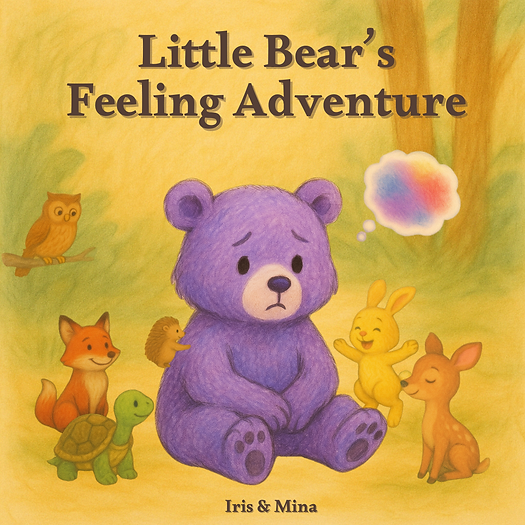Digital Storytelling Module
Authors.
Reflection.
In our project, we divided the work based on our ideas and strengths. At first, we discussed the topic and the educational meaning we wanted to deliver to young readers. I wrote the story proposal, story mountain, and storyboard by myself first, then discussed with my partner whether anything needed to be improved or adjusted. Based on our strengths, I also took the lead on illustrations and layout using Canva and Book Creator, and added the audio using an AI voice tool. Still, we made sure to discuss every step together, which helped us stay on the same page. Through this experience, I realized that collaboration requires communication, flexibility, and mutual support. One challenge we faced was managing the workload between us. Sometimes things didn’t feel completely balanced, but I learned to focus on the overall teamwork and final outcome. After all, completing the project smoothly as a team was most important.
We used several digital tools during the project. I used ChatGPT not only to help with story ideas, but also to generate some of the storybook illustrations. I gave prompts like “please generate a hand-drawn pastel illustration” to get the pictures I wanted. However, sometimes the results didn’t come out well, so I used Canva to refine them. One useful function in Canva is the background remover, which helped me take out the parts I didn’t need and keep the elements I wanted. I also used Canva to adjust colors, layout, and choose beautiful fonts, since Book Creator didn’t offer many font options. For the narration, I used an AI voice tool to make sure that each character had their own voice and narration, which made the story feel more lively and interesting, and also made the reading smoother and more consistent. In the end, I combined all the text, images, and audio in Book Creator to finish the digital storybook. Although it took time to adjust everything, I’m proud of how the colors and layout turned out, and how we used different tools to make the story more engaging.
The most meaningful part of this project for me was seeing how our ideas slowly turned into a complete digital storybook. From planning the story to designing the characters and combining text, images, and narration, every step felt creative and satisfying. I especially enjoyed working on the storyboard and thinking about how each page would look and feel. Another important part was receiving peer feedback and presenting the story to others. When we shared our draft with classmates, their suggestions helped me see things from a different perspective and improve both the language and design. I also learned how to accept feedback and make changes while keeping our original ideas. Presenting the story at the end was a great experience. It felt like presenting our "baby" to everyone, something we had created with care and effort. Seeing everything come together and hearing others' responses was rewarding.
This project made me realize how useful digital tools can be in language teaching. Storytelling can help students express emotions, build creativity, and feel more connected to the content. As a future language teacher, I hope to use similar tools and methods to make learning more interactive and meaningful for my students.
.png)





.png)